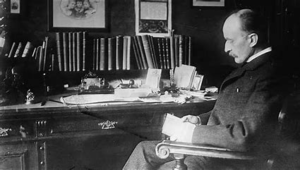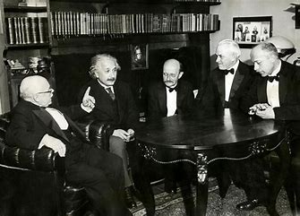Max Planck: Father of Quantum Mechanics and the revolution that led QM which is the branch of physics that describes the universe at its smallest level.

It has changed the way we view the world. It is a story of brave thinking. sharp mind and the tireless pursuit of knowledge And at the center of this story is Max Planck, the German physicist who is often credited as “the world’s greatest scientist”. But Planck didn’t work for Sozinho. His pioneering ideas laid the foundation and the field grew through the groundbreaking work of Albert Einstein, Niels Bohr, Werner Heisenberg, Erwin Schrödinger and many others.
Together they created a new structure for understanding reality. This is a structure that continues to shape science and technology today.
“In this Blog we will give an insight into the field of QM”
How It All Began: Planck’s Quantum Revolution
In the late 19th century, physics faced a big problem. Scientists are trying to understand how objects emit and absorb energy, especially in the form of light. Classical physics predicts that the intensity of radiation will increase endlessly as the frequency of light increases.This is clearly inconsistent with the experimental results. This disagreement became known as “Ultraviolet Disaster”.
In 1900, Max Planck proposed a solution that put physics ahead. He suggests that energy is intermittent. But it comes in a small, discreet package called a “quanta.” The concept is radical because it challenges the classical view of the universe as smooth and predictable.
Planck’s equation E=hν
(where E is energy, h is Planck’s constant, and ν is frequency) is the starting point for quantum theory. Planck initially viewed his idea as a math trick and ultimately became the key to unlocking the secrets of the quantum world (Quantum Computing Revolution: The Future of Technology).
Building on Planck’s Idea: Einstein and Bohr Step In
Einstein and the Photoelectric Effect
In 1905, Albert Einstein expanded on Plancks’ work by explaining the Photoelectric effect.
This is a phenomenon in which light releases electrons from a metal plate. Classical theory cannot explain why light below a certain frequency does not clearly emit electrons. No matter how strong the light is, Einstein proposed that light is made up of particles, or “photons,” each of which has a certain amount of energy.
This idea confirmed Planck’s hypothesis and earned Einstein the Nobel Prize in Physics in 2010.
Bohr’s Atomic Model
Years later, Niel Bohr used quantum concepts to solve another mystery: the structure of atoms. In 1913, he proposed that electrons oscillate around the nucleus at specific energy levels. and jump between these levels by absorbing or releasing quantum energy.
This model explains why atoms emit light in different spectral lines. and paved the way for modern atomic physics.
The Quantum Era: Heisenberg, Schrödinger, and Beyond
Heisenberg’s Matrix Mechanics
In the 1920s, quantum mechanics developed from a concept to a complete theory, introduced by Werner Heisenberg. He introduced it in 1925 as “matrix mechanics,” which is a mathematical approach to describing or studying the behavior of quantum particles.
Schrödinger’s Wave Mechanics
At the same time, Erwin Schrödinger developed “wave mechanics”, inspired by Louis de Broglie’s idea that particles could behave like waves. The Schrödinger wave equation has become one of the most famous phenomena in physics. It presents a method for predicting how quantum systems change over time.
The Uncertainty Principle
But quantum mechanics also challenges our intuition. Heisenberg’s Uncertainty Principle, introduced in 1927, reveals that we cannot know the precise position and moment of a particle.
This destroys the classical concept of a deterministic universe, replacing it with a world of probability and uncertainty.

Why Does the Moon Matters?
Quantum mechanics is not just a theoretical victory. But it also sparked a technological revolution. The principles of quantum mechanics led to the development of semiconductors, lasers, and magnetic resonance machines. and even the two computers and smartphones that we use every day. It also opens up new research fields.
From quantum computers to particle physics and helps scientists understand the universe at its most basic level.
“ Give a read about: How to become a research scholar in India. ”
The Legacy of Max Planck and the Quantum Pioneers
Max Planck’s discoveries sparked a scientific revolution. But the history of quantum mechanics is about teamwork. Einstein described light as particles. Bohr reveals the quantum structure of atoms Heisenberg defined the uncertainty principle. And Schrödinger gave us the wave equation.
Together their work created a new language for understanding nature. which is a harmony of ideas that still flows smoothly.
As Planck once said, progress is not just about individual discoveries. It is about renovation as we think. Challenge old ideas and use imagination or things beyond imagination Quantum mechanics is a testament to this spirit. It is a letter expressing humanity’s boundless curiosity and enthusiasm.
So next time you use your GPS, be amazed at the medical discoveries. or even observing the stars Remember Max Planck and two pioneers of quantum mechanics. They don’t just study the universe. But it also shows us how to see it in new ways.
About us:
SciAstra is a team of scientists and research scholars from the top research institutes around the world like Oxford, Harvard, Cambridge, and so on. Our vision is to promote critical thinking and scientific temperament by helping students in their careers in science.
We offer many free and paid courses where our mentors from the top research institutes like IISER, NISER, IACS, CMI, ISI IISC Bangalore, etc teach students in live classes, with study materials, mock tests, books, and everything needed. We have taught more than 10,000 students already since 2021 and achieved over 1000 selections with AIR 1, 7,10, 12, and 13 in IISc Bengaluru, IISERs, NISER, IACS, and so on. If you are looking to prepare for IAT / NEST 2024, you can check out our courses and get access to live classes, recorded lectures, study material, mock tests, doubt-clearing classes, and much more!
To know more about us, click here OR download the SciAstra App from the Play Store!





